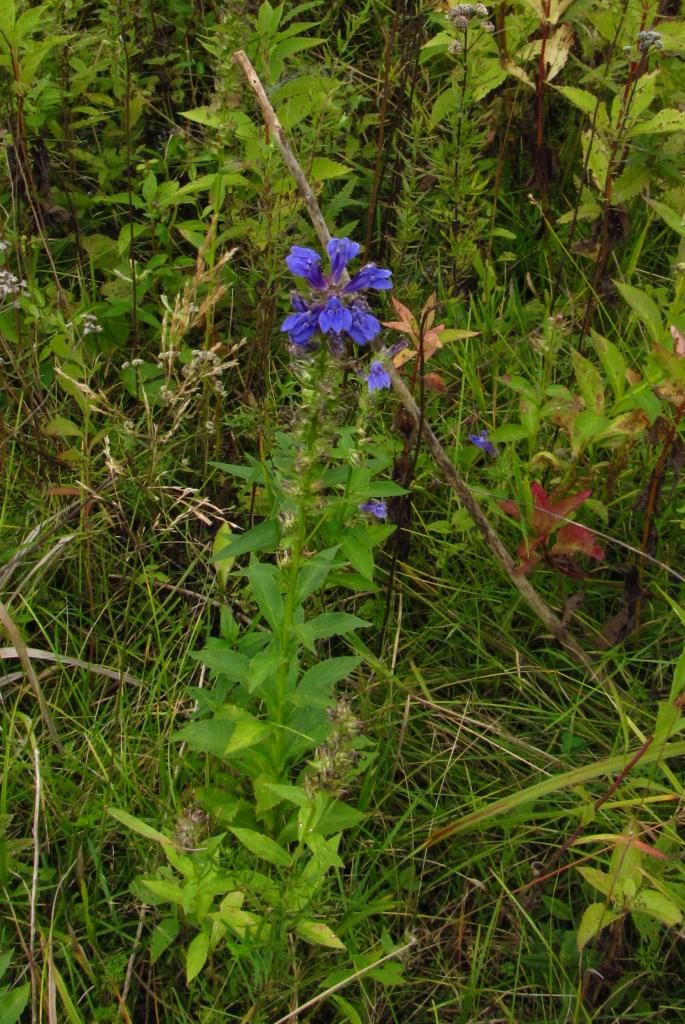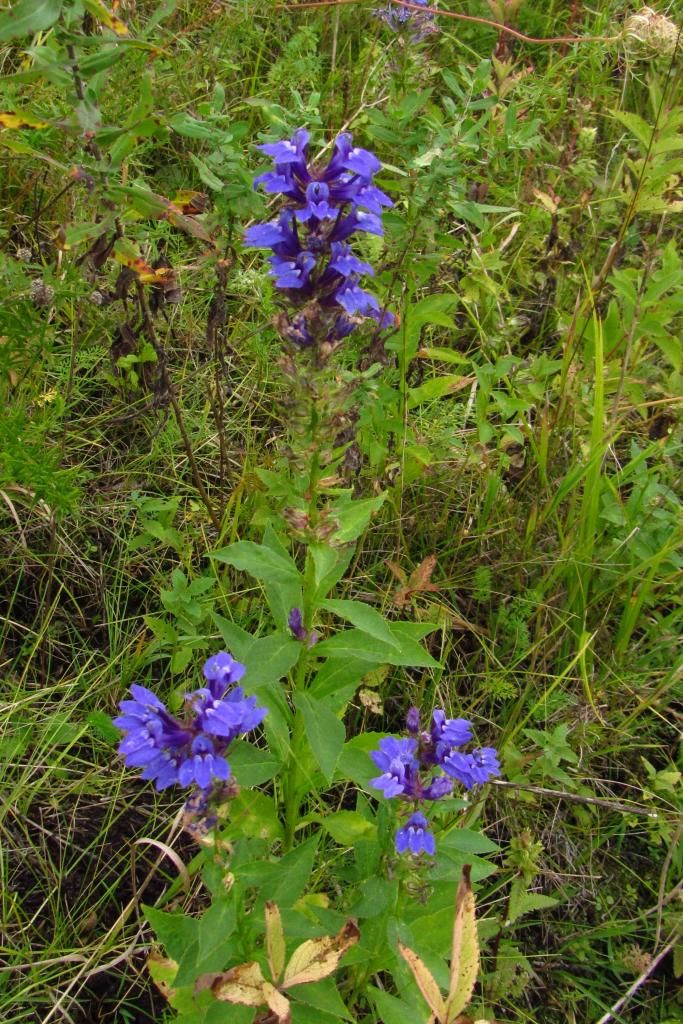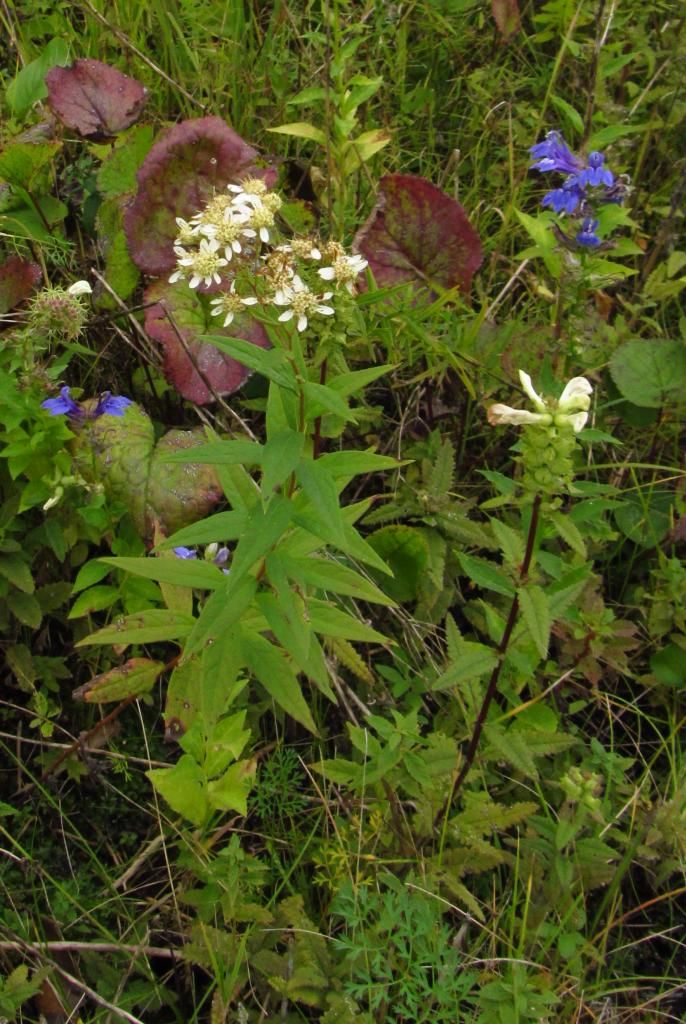The peak blooming period for today’s featured plant is in late summer, but we’ve had an unseasonably warm October across Iowa, so I decided to run with it anyway. Great blue lobelia (Lobelia siphilitica) is native to most of North America east of the Rockies. I enclose several pictures after the jump.
This post is also a mid-week open thread: all topics welcome.
As usual, the Illinois Wildflowers website contains a detailed description of this plant and its flowers. Among its distinctive features: “Each flower is split into two lips – the upper lip has two segments and the lower lip has three.”
Great blue lobelia is related to the red Cardinal flower (Lobelia cardinalis), and some sources list “blue cardinal flower” as an alternate common name. The blue or violet blossoms are a show-stopper.
Great blue lobelia reportedly grows well in woodland gardens and attracts “primarily bumblebees and other long-tongued bees” but sometimes “the Ruby-Throated Hummingbird, large butterflies, and Halictid bees.” As for soil requirements,
The preference is wet to moist soil and partial sun. Full sun is tolerated if the soil is consistently moist, and light shade is also acceptable. The soil should be fertile and loamy. This plant withstands occasional flooding, but it will become muddy and ragged-looking if it receives too much abuse. The small seeds require light to germinate. Great Blue Lobelia can be highly variable in height, depending on environmental conditions and its stage of development.
This plant grows in a variety of habitats, but the common thread is fairly wet ground.
Typical habitats include moist black soil prairies, soggy meadows near rivers, low areas along rivers and ponds, floodplain and bottomland woodlands, woodland borders, bottoms of sandstone canyons along streams, swamps, fens, gravelly seeps and springs, ditches, and moist areas of pastures. Great Blue Lobelia can be found in both disturbed areas and high quality habitats.
The great blue lobelia I photographed were growing in a seep at Whiterock Conservancy, near the Middle Raccoon River.
The scientific name of great blue lobelia means what you probably suspect:
The genus Lobelia is named after the Flemish botanist Matthias de l’Obel (1538-1616), who, when he moved to England as physician to James I, anglicized his name to Matthew Lobel, hence “lobelia.” The species siphilitica, is a reference to the old folk medicine belief that extracts made from the plant could cure syphilis.
Bleeding Heartland doesn’t recommend trying that natural cure at home.
Last shot for today: great blue lobelia blooming near flat-topped aster. The flower near the lower right, which has passed its peak blooming period, is swamp lousewort (Pedicularis lanceolata).



